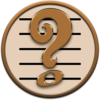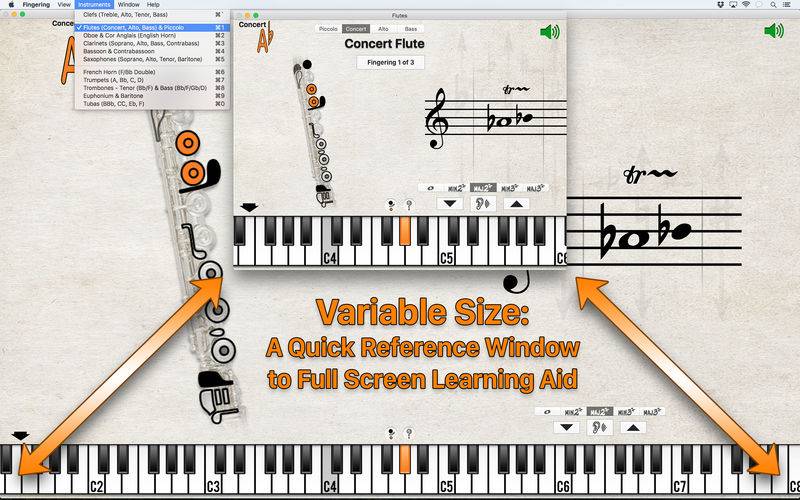点击按钮跳转至开发者官方下载地址...
The best interactive fingering charts for brass and woodwind instruments.
Over 1200 woodwind fingerings, including many alternates for the following instruments:
- Flutes (Piccolo, Concert, Alto and Bass) includes m2, M2, m3, M3 trills
- Oboe and Cor Anglais includes m2 and M2 trills
- Clarinets (Soprano, Alto, Bass and Contrabass) includes m2, M2 trills
- Bassoon & Contrabassoon includes m2 and M2 trills (Treble, Tenor and Bass clefs)
- Saxophones (Soprano, Alto, Tenor and Baritone) includes m2, M2, m3, M3 trills
note: Alto and Tenor Sax provide altissimo fingerings up to written F, two octaves above the top line F.
- French Horn (F/Bb Double) (Treble and Bass clefs)
- Trumpets (in A, Bb, C and D) (includes Cornet and Flugelhorn)
- Trombones (Tenorbass Bb/F & Bass Bb/F/Gb/D) (Treble*, Tenor and Bass clefs)
- Euphonium & Baritone (Treble*, Tenor and Bass clefs)
- Tubas (BBb, CC, Eb and F) (Treble* and Bass clefs)
*Treble clef on the brass instruments follow British Band tradition of using transposing notation for non-transposing instruments. This affects Trombone, Euphonium, Baritone and BBb, Eb & F Tubas.
Select a written note and have the fingering displayed and concert pitch played on the piano.
Play a concert pitch on the piano, and have the fingering displayed and the transposed note written on the staff.
Directions:
Simply click and drag up and down on the staff to select the note, drag right for sharp, left for flat, or drag up and down to the right or left of the written note for constant sharps or flats.
When playing the keyboard - glissando up, notes will be notated in sharps, when you glissando down, notes will be notated in flats. When you click on specific notes they will be notated in the most common accidental for that note. ie: Eb rather than D#, F# rather than Gb.
If there are alternate fingerings available for a note or trill, a button will appear allowing you to navigate through them.







